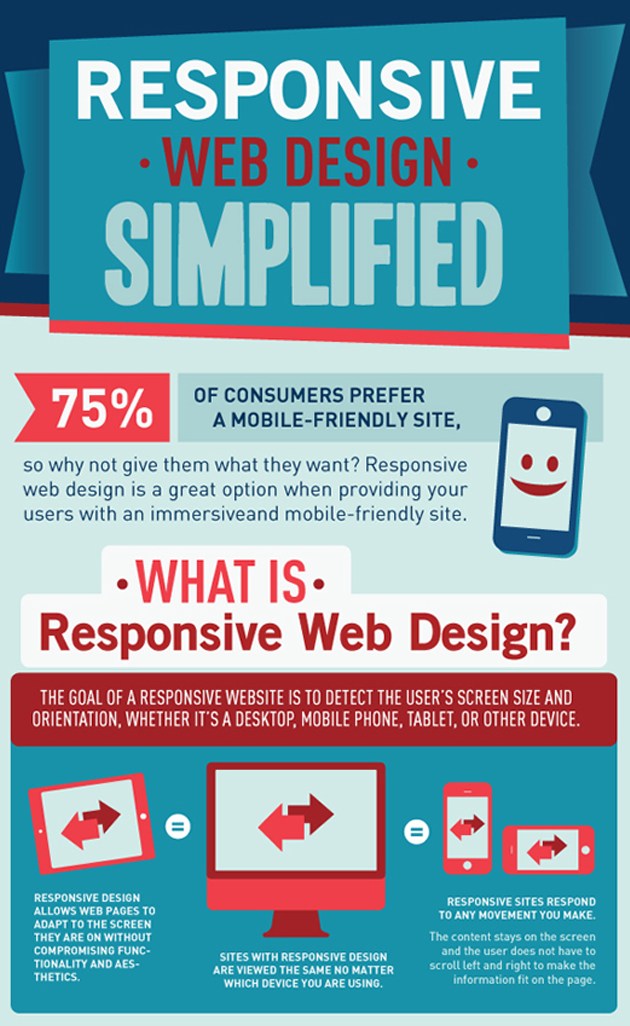Eager To Uncover Exactly How Internet Site Layout Has Transformed With Time? Dive Into The Development From Simplicity To User-Focused Experiences
Eager To Uncover Exactly How Internet Site Layout Has Transformed With Time? Dive Into The Development From Simplicity To User-Focused Experiences
Blog Article
Staff Author-Thorsen Trolle
In the past, websites were basic and focused on details. Navigation was straight, and design was for desktops. Now, customer experience is crucial. Information overviews styles for simple navigating. Receptive formats suit different tools. Today, dark setting reduces strain, and minimalist menus improve navigating. Interactive attributes engage customers, and vibrant visuals stand apart. AI assimilation increases engagement. See just how style has advanced to boost your on the internet trip.
Very Early Days of Web Design
In the early days of web design, simplicity preponderated. Websites were fundamental, with limited shades, font styles, and layouts. The emphasis was on providing info rather than showy visuals. Individuals accessed the net through slow dial-up connections, so speed and functionality were key.
Navigation food selections were straightforward, normally situated at the top or side of the page. Web sites were designed for desktop, as mobile browsing had not been yet prevalent. Material was king, and developers prioritized easy readability over complicated design aspects.
HTML was the main coding language utilized, and developers needed to function within its restrictions. Animations and interactive functions were minimal compared to today's requirements. Web sites were fixed, with little dynamic web content or personalized user experiences.
Rise of User-Focused Design
With the evolution of web site design, a change in the direction of user-focused layout principles has actually come to be increasingly noticeable. Today, creating sites that focus on individual experience is critical for involving site visitors and achieving business objectives. User-focused layout entails recognizing the requirements, preferences, and habits of your target market to tailor the site's layout, material, and features as necessary.
https://andrelcsjz.thenerdsblog.com/32486746/enhancing-visual-allure-making-use-of-high-quality-photos-in-website-design perform thorough research study, such as customer surveys and usability screening, to collect insights and feedback directly from users. This data-driven method helps in creating user-friendly navigating, clear calls-to-action, and visually enticing interfaces that reverberate with site visitors. By placing the individual at the facility of the design procedure, websites can provide a more individualized and satisfying experience.
Receptive design has additionally emerged as a vital element of user-focused design, making certain that websites are enhanced for numerous tools and display sizes. This versatility boosts availability and functionality, dealing with the varied methods users interact with web sites today. In essence, the rise of user-focused design symbolizes a shift in the direction of producing electronic experiences that prioritize the needs and expectations of completion customer.
Modern Trends in Web Design
Check out the latest patterns shaping web design today. One popular trend is dark mode layout, using a streamlined and modern appearance while minimizing eye stress in low-light environments. One more vital trend is minimalist navigation, streamlining menus and improving individual experience by concentrating on essential elements. Integrating micro-interactions, such as computer animated buttons or scrolling results, can produce a much more engaging and interactive web site. Responsive style stays important, guaranteeing seamless individual experiences throughout different devices. Additionally, using https://www.forbes.com/sites/theyec/2019/12/17/five-tips-for-selling-digital-marketing-to-local-businesses/ and unbalanced formats can add aesthetic passion and draw attention to details web content.
Integrating AI innovation, like chatbots for client support or tailored suggestions, improves customer involvement and streamlines processes. Availability has also come to be a significant pattern, with developers prioritizing inclusive layout practices to satisfy diverse user demands. Welcoming sustainability by maximizing website performance for speed and efficiency is another arising pattern in web design. Working together with customer responses and data analytics to iterate and enhance style constantly is necessary for staying relevant in the ever-evolving electronic landscape. By embracing these contemporary fads, you can develop an aesthetically enticing, straightforward internet site that reverberates with your audience.
Conclusion
As you review the evolution of internet site style from the very early days to now, you can see just how user-focused design has actually come to be the driving force behind modern fads.
Welcome the journey of change and adjustment in website design, constantly maintaining the user experience at the forefront.
Remain current with the most recent patterns and technologies, and never quit evolving your technique to create aesthetically sensational and user-friendly websites.
Develop, adapt, and develop - the future of web design remains in your hands.
